page 6
http://threesology.org
| What is time pg 1 | What is time pg 2 | What is time pg 3 | What is time pg 4 | What is time pg 5 | What is time pg 6 | What is time pg 7 | Time Travel Considerations |
Can time be differentiated as having linear, circular and triangular configurations, or mixed characteristics thereof? And what of the ideas formulated in physics theories, are all of them exhibiting one or another of the three geometric forms? For example:
| Linear | Circular | Triangular |
| Worm holes (length) | Worm holes (width) | Worm holes (convection points) |
| waves (Longitudinal path) | particles | waves (up and down) |
| string theory |
No less, is a difference in time and/or dimension to be distinguished other than by a numerical reference? Then again, by extension to the above considerations of including various analogies, let us not overlook that the double-stranded DNA configuration is portrayed in a "twisting" or helical pattern, as if life itself repeats itself through a tube or tunnel that can alternatively be described as a bridge. Whereas we can describe spins or twists in terms of referencing an analogy to a spinning (orbital) planet, we could use this same generality to speak of bullets whether they rotate via a twist or tumble. In as much as Watson and Crick thought of the DNA molecule as being triple-stranded, some think they stole the double-stranded idea from Rosalind Franklin and her X-ray diffraction studies within the field of Crystallography which, along with other researchers, led to the discovery which showed that the tobacco Mosaic virus had a single RNA helical strand. Hence, we may say that life has a single (RNA), double (DNA) and triple (protein) strand, leading us to suspect this may also be true in the realm of particle physics... and suggests a one, two, three "threesological" developmental sequence.
Has time changed in step with the matter/energy composition of the Universe? (In other words, is today's time different than it was billions of years ago... and will be different in the future?)
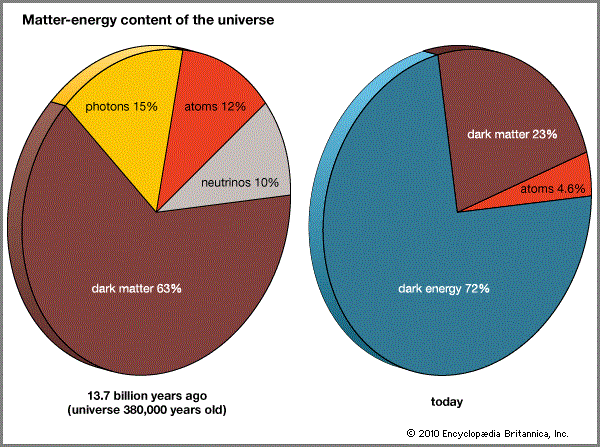
|
Twenty-seven percent of the universe's matter-energy composition is matter. Only 0.5 percent is in the mass of stars and 0.03 percent of that matter is in the form of elements heavier than hydrogen. The rest is dark matter. Two varieties of dark matter have been found to exist. The first variety is about 4.5 percent of the universe and is made of the familiar baryons (i.e., protons, neutrons, and atomic nuclei), which also make up the luminous stars and galaxies. Most of this baryonic dark matter is expected to exist in the form of gas in and between the galaxies. This baryonic, or ordinary, component of dark matter has been determined by measuring the abundance of elements heavier than hydrogen that were created in the first few minutes after the big bang occurred 13.8 billion years ago. The dark matter that comprises the other 22 percent of the universe's matter is in an unfamiliar, non-baryonic form. The rate at which galaxies and large structures composed of galaxies coalesced from density fluctuations in the early universe indicates that the non-baryonic dark matter is relatively "cold," or "non-relativisitic," meaning that the backbones of galaxies and clusters of galaxies are made of heavy, slow-moving particles. The absence of light from these particles also indicates that they are electromagnetically neutral. These properties give rise to the particles' common name, weakly interacting massive particles (WIMPs). The precise nature of these particles is not currently known, and they are not predicted by the standard model of particle physics. However, a number of possible extensions to the standard model such as supersymmetric theories predict hypothetical elementary particles such as axions or neutralinos that may be the undetected WIMPs. Source: "Dark Matter." Encyclopædia Britannica Ultimate Reference Suite, 2013. |
Yet if we view the cosmological Big Bang as occurring in a confined space of vacuum, the area of confinement may appear to be limitless from the human realm of perception and we do not ordinarily think in terms of magnetic fields or strength thereof. Nor do we know if this presumed space in a presumed cylindrical containment field of varying magnetic moments represents singularity, or multiplicity... such as in the case of several cylinders set in an arrangement like those of an automobile engine... thus suggesting the presumed "expansion" of the Universe is like the expansion of gases which force a piston along a shaft to form a unit of activity which transfers linear motion into circular in order to produce an effect such as the reciprocation of an engine connected to an automatic and/or "standard" (manual shift) transmission via a torque converter or clutch/pressure plate assembly. Whereas we can imaginatively view Communism, Democracy and Socialism as different modes of transportation (see: Three Buses of Governance), this is not the perspective being outlined here.
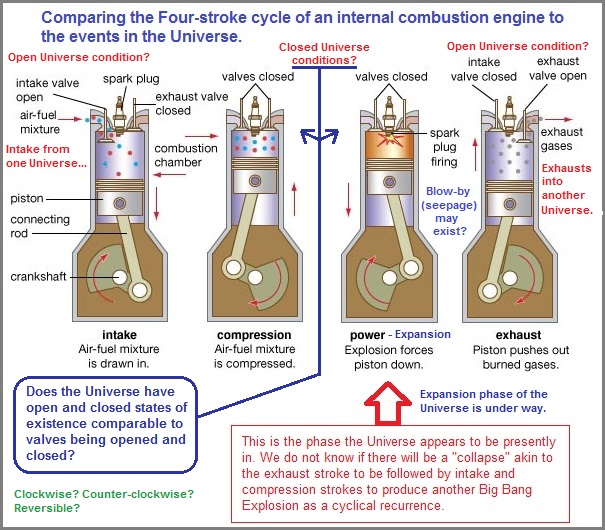
With respect to the idea of multi-dimensions and the topic of rifling in guns, rifles and cannons, we might want to assume there is a "useful" limit to the quantity of barrels that can be incorporated into a design, though attempts have been made in weaponry to produce those with (more than one, two or three) multiple variations such as the Gatling gun that has been superseded with a single-barrel machine gun which fires bullets rapidly in succession due to increased understanding in the designs of bullets and barrel configurations... including those conjured up by science fiction models. Hence, the point to be made is that even though we can imagine and perhaps design multi-barrels (and multi-dimensions), there are imposed constraints that we sum up by calling practicality... such as costs, construction time, weight, complexity, mobility, flexibility, etc... The introduction and usage of the Gatling gun involved a different set of time-relate parameters involving the loading and shooting of multiple rounds... and brings us to the question of whether or not one or more particles are types of bullets which can be re-fired unlike bullets in the conventional sense, and thus are given a conceptualized (rifled) "spin" number that may in some instances resemble (smooth bore) tumbling instead.
In speaking about color, tubes and guns... since these subjects have been brought to the fore, an everyday example of all three elements is found in the color picture tube (containing an electron gun).
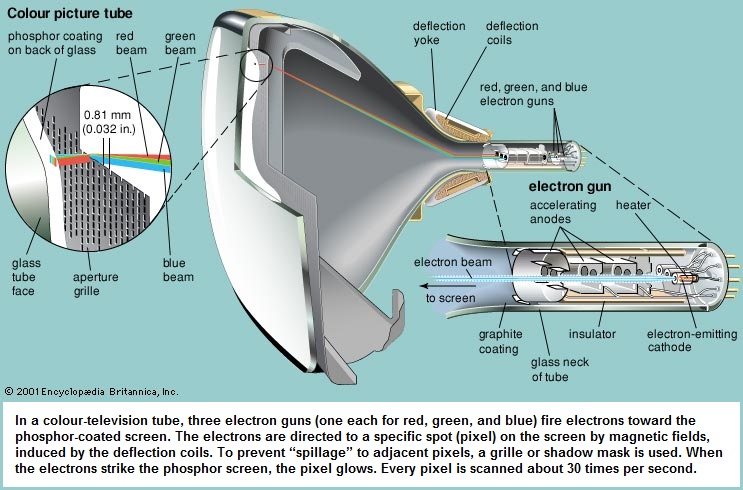
Now let us take the same picture and make a few changes in order to provide an image of the Universe from the time of the Big Bang:
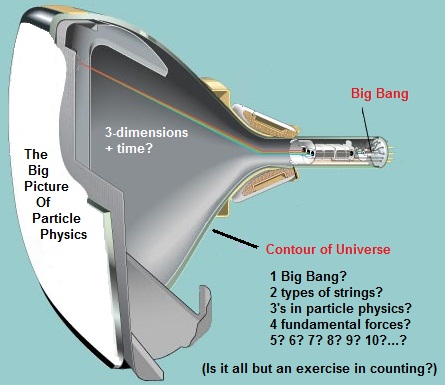
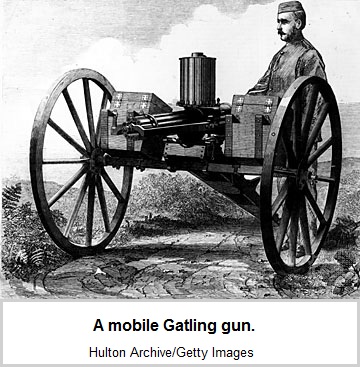
The Gatling Gun was a hand-driven machine gun, the first to solve the problems of loading, reliability, and the firing of sustained bursts. It was invented about 1862 by Richard J. Gatling during the American Civil War. After early experiments with a single barrel using paper cartridges (which had to have a separate percussion cap), he saw in the newly invented brass cartridge (which had its own percussion cap) an opportunity to fashion a truly rapid-fire weapon. Gatling contrived a cluster of 10 barrels, each of which, when rotated by a crank, was loaded and fired once during a complete rotation. The barrels were loaded by gravity and the camming action of the cartridge container, located directly above the gun. Each barrel was loaded and fired during a half-rotation around the central shaft, and the spent cases were ejected during the second half-rotation. Without equal in the era of hand-operated machine guns, the Gatling gun could fire 3,000 rounds per minute if externally powered. It and all other hand-operated machine guns were made obsolete by the development of recoil- and gas-operated guns that followed the invention of smokeless gunpowder. Source: "Gatling gun." Encyclopædia Britannica Ultimate Reference Suite, 2013. |
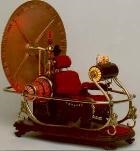
For the moment, let us tarry a bit longer on the subject of rifling because it provides images which can be used to illustrate a "smooth bore" as well as cylindrical bores with one or more rifling "twists", even though I was unable to find any reference as to whether there is an effective limit to how many rifling twists can be accommodated or are useful given the constraint of materials (bullets, explosive charge, metals). Necessarily so, with respect to time, is time travel merely a means by which a particular form of rifling is used... to provide not only travel to and from the past, present and future, but allows for "dimensional" (alternative life-scenario) changes? Rifling can enhance or slow down time as described by speed and distance traveled. Let's take a look at some images of rifling in case the reader is unfamiliar with the idea:
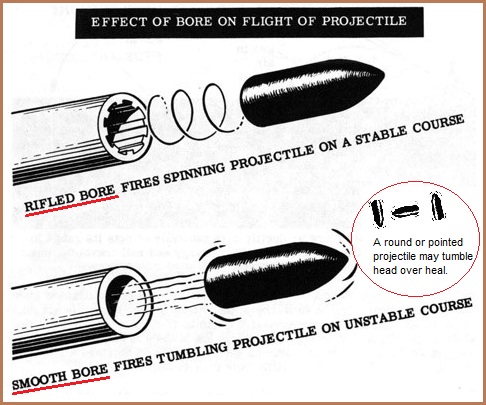 |
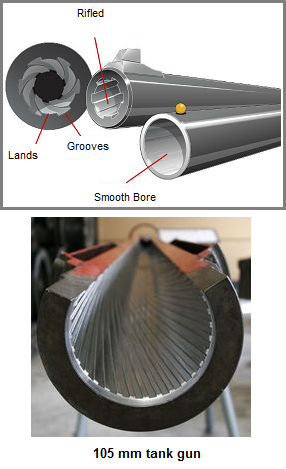 |
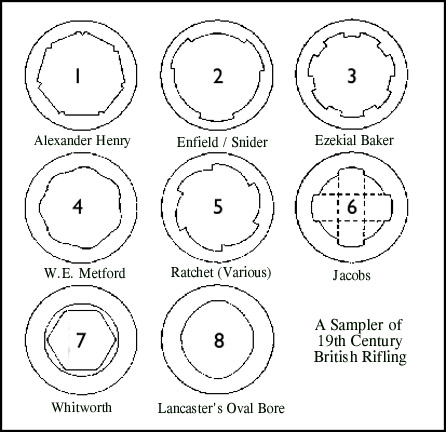
|
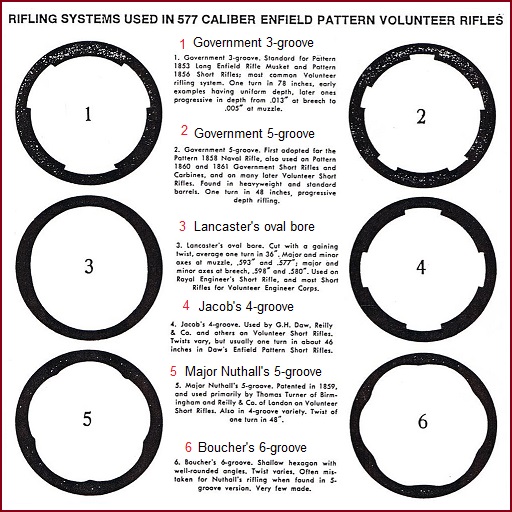
|
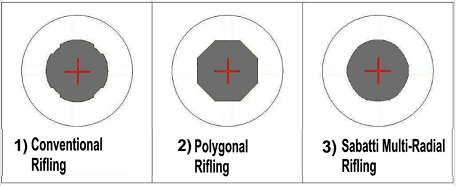
|
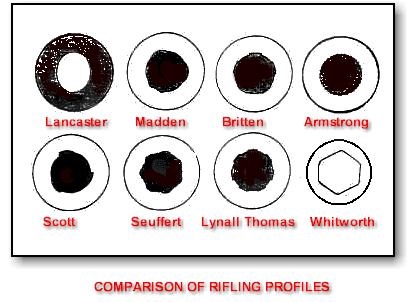
|
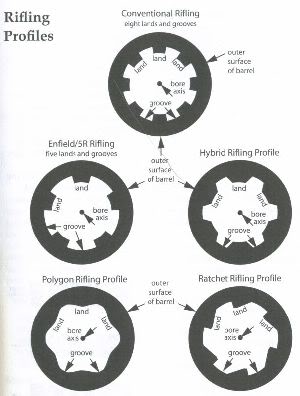
|
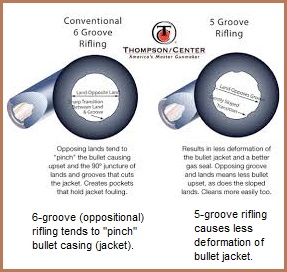
|
Because time not only is seen as a linear form in the portrayal of it as related to an arrow, but as an "object" in motion, the impetus for such an image may well have its origins with dynamic (moving) instead of static (non-moving) circumstances chanced upon by our human perceptions. In other words, we do not customarily hear or read anyone saying that time is akin to a motionless rock, even though all rocks are in motion if we view them as an object on a planet that is either revolving or part of a cosmological expansion. In as much as all of this might be of some philosophical interest, it still does not answer the question of what time is... though we might arrive at some definitive description in a roundabout way by discriminating what time isn't... though this too places us into a similar labyrinthine position of not being able to satisfactorily answer the "what is time" question. As hit and miss as our search appears to be, it unravels other perspectives such as attempting to understand particles (and planetary) behavior with respect to spin, in that because of an intermittent "wobble" in the Earth's rotation, this same condition may exist on the quantum (particle) level to suggest that both are being subjected to types of respective "barrels" exhibiting both a smooth and rifled bore. As a side note, the drawing can be the schematic of a pulse weapon by distorting particles to exhibit a quantum jump into a compacted wave having a leverageable mass... thus proving multiple weapons into a single unit. Imagine having a spit wad thrower, pea shooter, rubber-band gun, derringer, 22, 9mm, 30, 44, 45, 50, 60 (etc.) caliber pistols/rifles/machine gun, shotgun, grenade/rocket launcher and atomic bomb weapon all in one. Recoil could be considerably dampened by inverting magnetic field inductions through recirculated undulations which could be reciprocated into forward motion like the momentum of a heavy flywheel without the needed weight or mounting apparatus.
Both planets and particles exhibit behavior suggesting a "barrel" with smooth and rifled patterns. Differences in "spin" suggests differences in rifling, and/or the type of "barrel" being used. Singular or composite materials may require different riflings... or not permit a rifling at all.

Just because we don't see planets and particles existing within a barrel or sting-like tube, doesn't mean conditions amounting to such constraints aren't there. And just because we typically think in terms of a smooth "OR" (and not "AND", or "AND/OR") rifled barrel, the case may be that the barrel has alternating attributes of both... and even others over longer expanses of time. If a barrel begins or ends with a smooth or rifled bore though has attributes of both alternating between the beginning and ending points, how will a particle or planet behave after it leaves the barrel... unless it never does and exhibits a particular characteristic when viewed within a smooth or rifled space. And if the Universe is shaped like a (triangular) blunderbuss, does the recurring behavior of planets and particles suggest they are none-the-less confined to constraining eddies of current which give the impression of enclosed spaces suggesting smaller pistol or rifle barrels or even derringer sizes... like barrels within one or more barrels or multiple barrels arranged linearly or circularly (such as a Gatling gun or microtubule arrangement)?
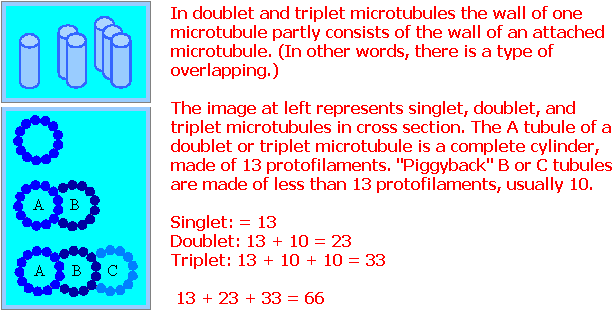
But the singular idea of a tube, barrel or hollow string may be misleading. However, it is necessary to take a brief step back in order to surmise that the vacuum of space is not pure— in that it is "interrupted" or "speckled" with planets, comets, asteroids, etc... Hence, along with the notion of an alternating smooth and rifled scenario, we have a vacuum and "barriers or landing ports"... in as much as one might offer some semblance of a metaphorized dichotomy. Thus, let us also include an illustration of this perspective:

Now that we have these preliminary alternations in mind, attempting to coalesce the fundamental forces may require that we enlarge our application of interconnected ideas of an enclosed space with open space in order to describe some framework. While a tube exhibiting an alternating open/close, smooth/rifled, etc., has some value in our visualizations for extricating an image of time, it also displays a lattice, web, or honeycomb structure that some may prefer to view as a chain-link fence in order to display both open and closed spaces, while others may prefer to use the analogy of a net, homemade quilt with different patchwork designs which repeat, honeycomb, weaving, etc.... Such a structure would satisfy both the implications of the knot theory from mathematics and the vibrating string theory of physics... in that a net can be interlaced with knotted sections just as a fence can be interlaced with "chained links"... both of which can vibrate depending on how taut they are strung up or out... thereby adding the dimension of wave and light theories as well.
Involved with an acknowledgment of vibration is the inclusion of adjusting one's perception to whether the vibration(s) occurs internally or externally, and how one or the other can be interpreted to be the other. Having hollow strands of interconnections would provide conduits suggested by worm theory advocates. While most people may not see nor even think about space and quantum theories in terms of an interconnected matrix of hollow tubes, they do think in terms of atomic particle "shells" arrayed in an interconnected network of orbits... though other models have been proposed and found to be faulty in one respect or another. The "shells" exhibit conduit and matrix activity even though we can not yet readily see (in the present age) such matrices or conduits... and these conduits can alternatively be described as smooth or rifled barrels. Whereas we describe rifling with concentrically overlapped swirls, lines, or twists, the idea of a up and down wave patterns suggests the same from a different vantage point. In short, quantum theory says more about what we think we know than having a complete picture and is thus a structure of quantum (quantitative) guesses... verified or otherwise.
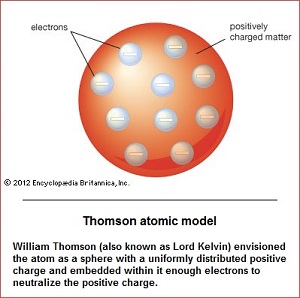 |
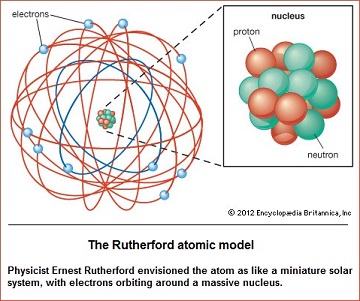 |
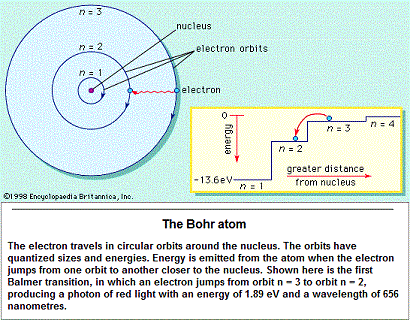 |
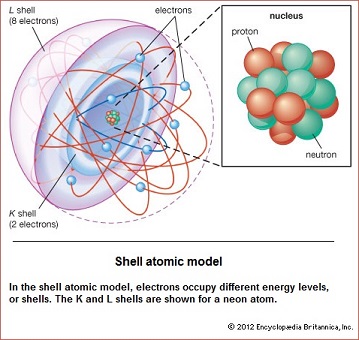 |
Like black holes which have not been seen but inferred from "the black hole's existence can be inferred from its energetic effects on an envelope of gas swirling around it at extremely high velocities." (from Britannica article on black hole.), so to can the concept of an interlaced structure whose design can be extrapolated from what we of the present day can deduce as effects or absence there of.
There are some who may prefer to see the question of time as a digression, if not a distraction or metaphor to the question of existence. In this case, human existence. Does the notion of time, in relation to life and death or a beginning and an end tell the whole story if we don't elaborate on the analogy of time-as-an-arrow by including the fletching (feathers) and tips? And what about the shaft. Is the usage of wood, aluminum and carbon fiber yet another trio which is causing us to overlook the repetition-of-threes amidst our considerations, such as the usage of three fingers to hold a pen or pencil to write down one's thoughts or a three-layered setup on a keyboard? Or how about the usage of a period, question mark and exclamation point to end a sentence? No less, the usage of a linear object such as an arrow begs the question why this basic geometric form and not something other basic character such as a circle or triangle, when these three crop up time and again in a variety of ways in different conceptual frameworks, as illustrated by the following examples?
Here are a few examples of Linear, Circular, Triangular expressions:
| "3" Basics Formula | Linear | Circular | Triangular |
| 3 galaxy/universe items | Our galaxy through space | Motion of galaxy | Expansion/Contraction {<>,X} |
| 3 basic Earth motions | Earth+Moon+Sun | Rotation of Earth | Precession of Earth's axis |
| 3 forms of matter | Liquid | Solid | Gas |
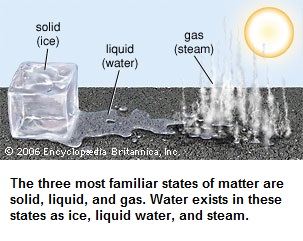
| |||
| 3 fundamental forces | (N)electro-magnetism(S) | Gravity | Nuclear (+)(-)(+/-) |
| 3 conceptual models: A dual form of singularity A circular form of duality A plurality of threeness |
Primitive (Singularity) |
Native American (Duality) |
Indo-European (Trianguality) |
| 3 (hair) cross-sections | African: ribbon-like | Asian: circular | Caucasian: ellipsoid |
| 3 Earth shapes | Earth is flat | Earth is round | Earth is a triaxial ellipsoid |
| 3 Universe theories | Universe is flat | Spherical | Saddle (triangular)-shaped |
| 3 physics ideas | String theory | Particle theory | Multi-dimensional theory |
| 3 stone tool shapes | Mono-facial | Bi-facial | Tri-facial (arrow heads) |
| 3 counting objects | Lines (on bones, rocks, etc.) | Pebbles, stones, (clay,etc.) | Cones (wedges) |
| 3 engineering tools | Lever | Pulley/Wheel | Fulcrum |
| 3 engine shapes | In-line, Slanted, etc... | Radial, Rotary | V-shaped |
| 3 shapes game | Paper (flat-linear) | Rock (round-circular) | Scissors (X-shaped/triangular) |
| 3 human face items | Eyebrows | Eyes | Nose |
When we look at the faces carved on pumpkins during the Halloween season, we see a repeated and interchangeable usage of linear, circular and triangular eyes, mouth, and nose. Not to mention that most pumpkins have a circular shape, most knives have a linear shape, and that some readers may use an argument suggesting a "triangular" opposition to explain this example way. (Thinking in terms of a triangular relationship that always results in conflict.) |
|||
| 3 playground items | Monkey bars/See-saw | Merry-go-round | Slide/Swing-set support |
| 3 in-vehicle views | Road, Stick shift, etc... | Steering wheel | Perceptual view of distance |
| 3 early industry tools | Staff, Poker | Pottery wheel, Kiln | Fire (flame), Bellows |
| 3 pre-industry tools | Stick | Rock | Fire (flame) |
| 3 cyanobacteria shapes | Filamentous (string-like) | Coccoidal (ball-like) | Ellipsoidal (egg-shaped) |
| 3 stromatolite shapes | Flat-layered | Domical/Columnar | Conical |
| 3 building structures | Skyscrapers | Coliseums Stadiums,etc. |
Pyramids |
| 3 foot descriptions | Heal to Toe line | Balls of feet | Arch of foot |
| 3-in-1 necktie forms | Fronts-piece covers buttons | Encircles the neck | Triangle slip knot |
| 3-in-1 washing machine cycle status symbols Speed Queen Commercial washer Model # SWT91QN |
In Use (vertical line) |
Spin (circular "curlicue") |
Rinse (triangular water shape) |
| 3 bird-flight formations | Diagonal, Horizontal, Vertical | "Bunched up" | V-shaped (also J/L/7 variations) |
Note: I used the symbols {><} and {X} to portray expansion and contraction. Did the Universe expand like a bursting ball in all directions or a selected direction? It is not certain if the "Big Bang" occurred at a single point and then expanded in all directions. Unless we care to consider that our Universe is the result of an implosion, which is 1 idea, then there are 3 other theories we can consider, which brings our overall formula to a 3:1 ratio. The other three being a Linear- Circular- Triangular expansion after the Big Bang. Also, if the expansion is slowing down, is there to be an eventual "Big Crunch?"
Page initially created: Thursday, 16-Nov-2017... 05:10 AM
Initial Posting: Sunday, 15th-April-2018... 8:09 AM
Updated Posting: Tuesday, 29th-May-2018... 12:07 AM
Herb O. Buckland
herbobuckland@hotmail.com
